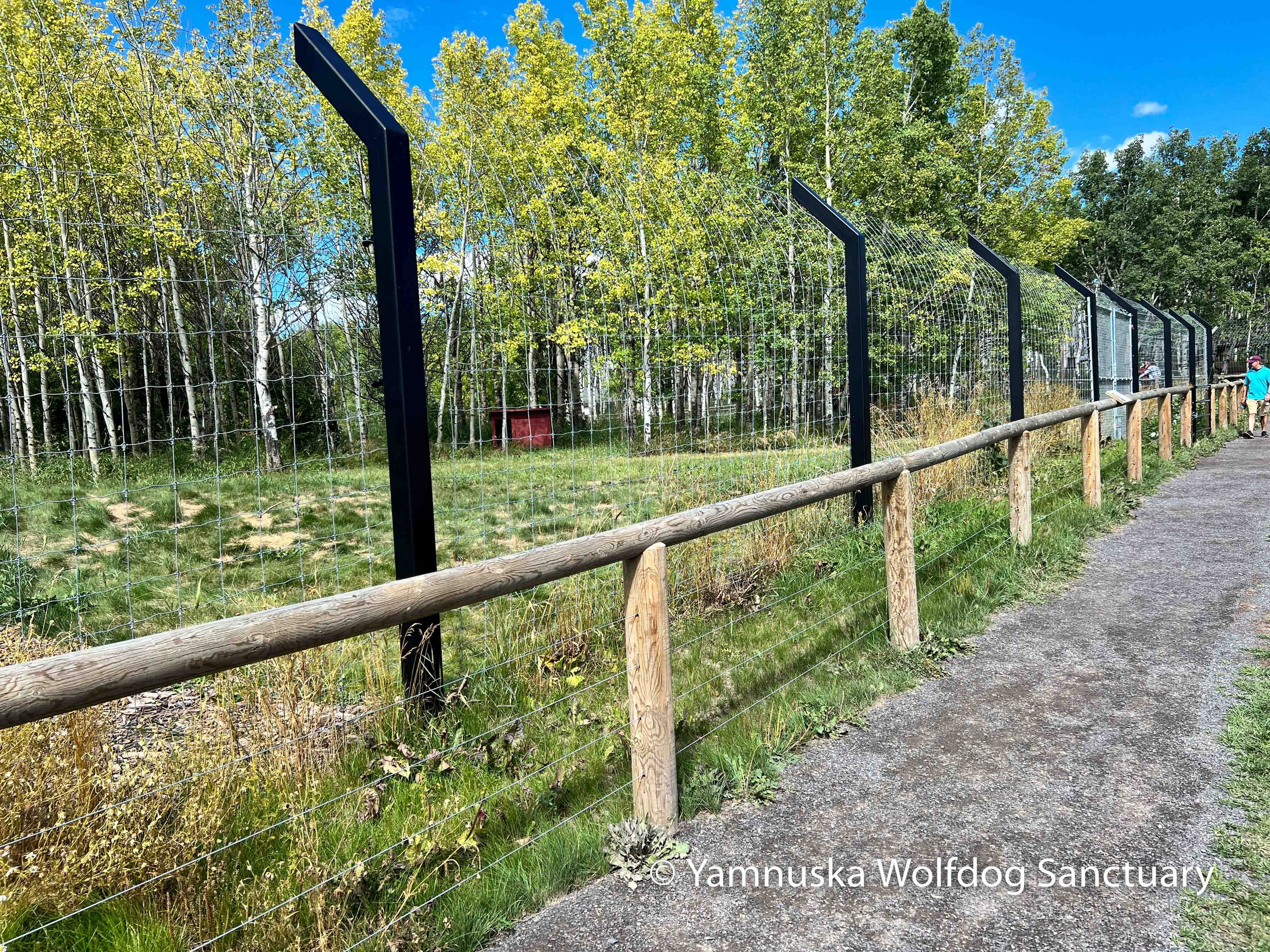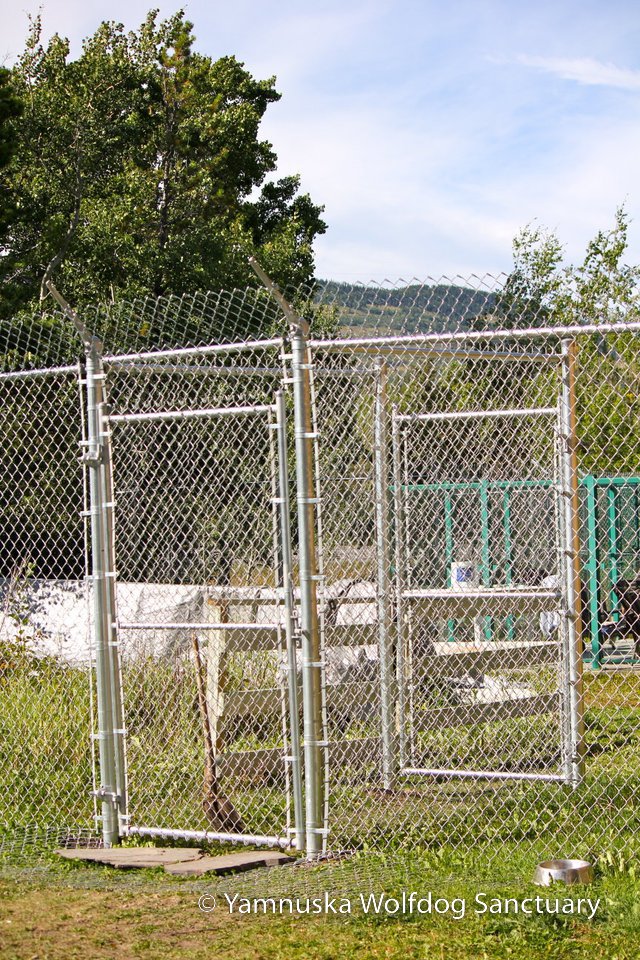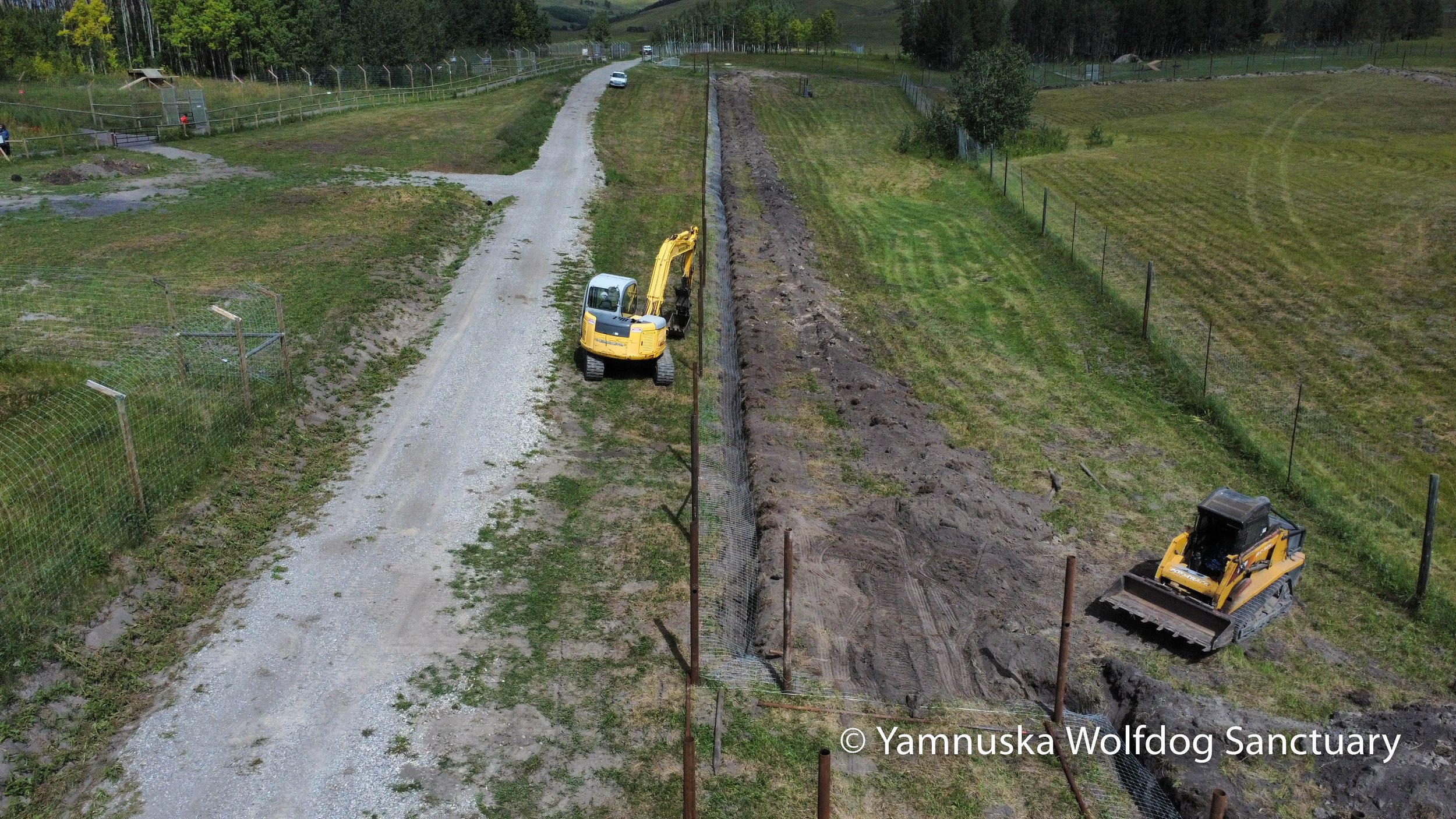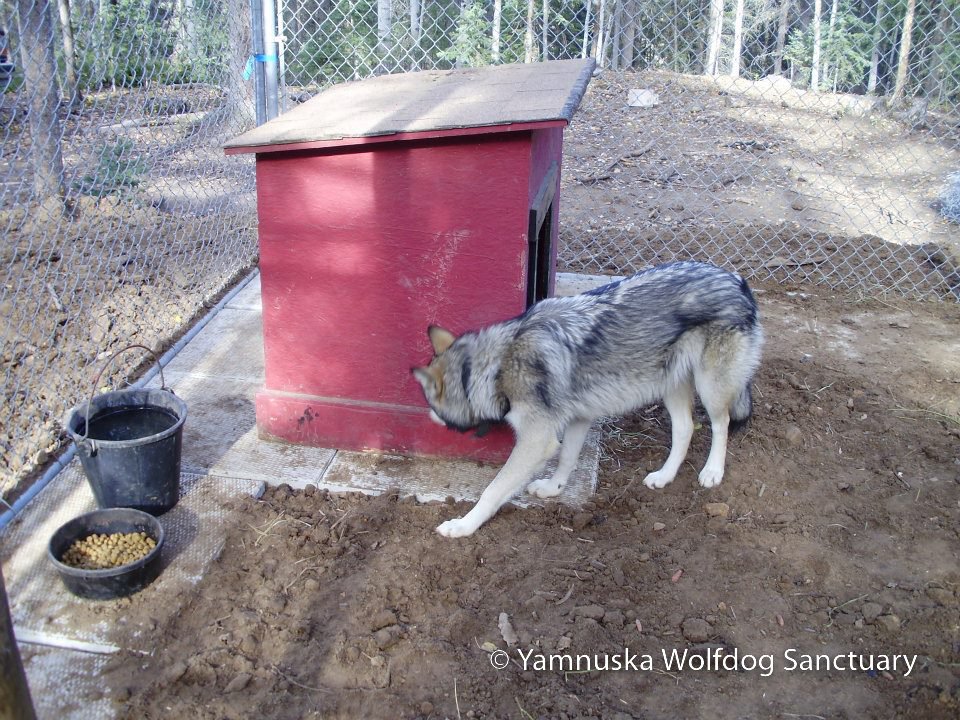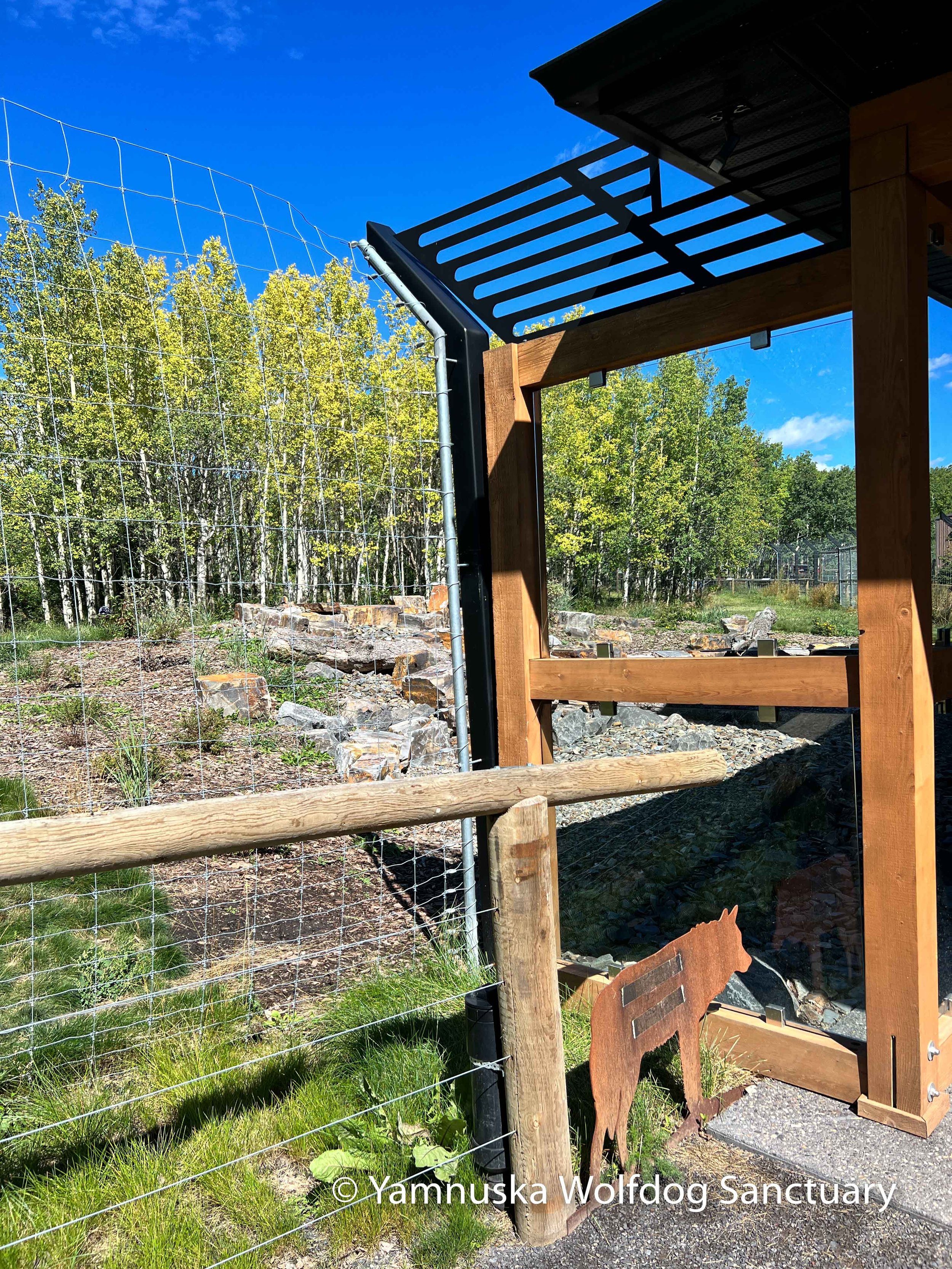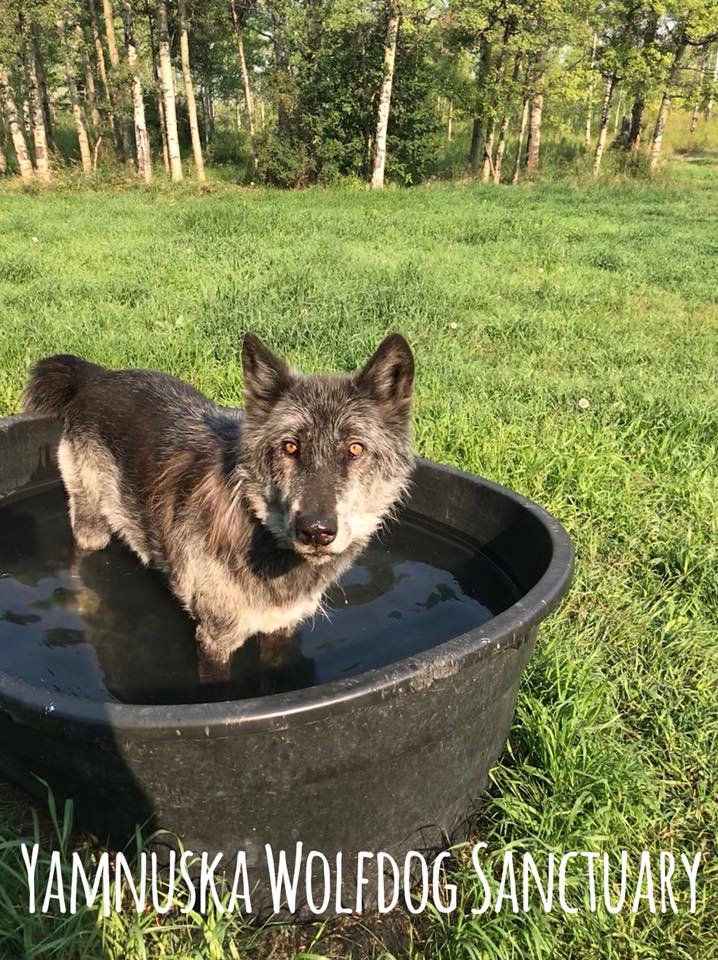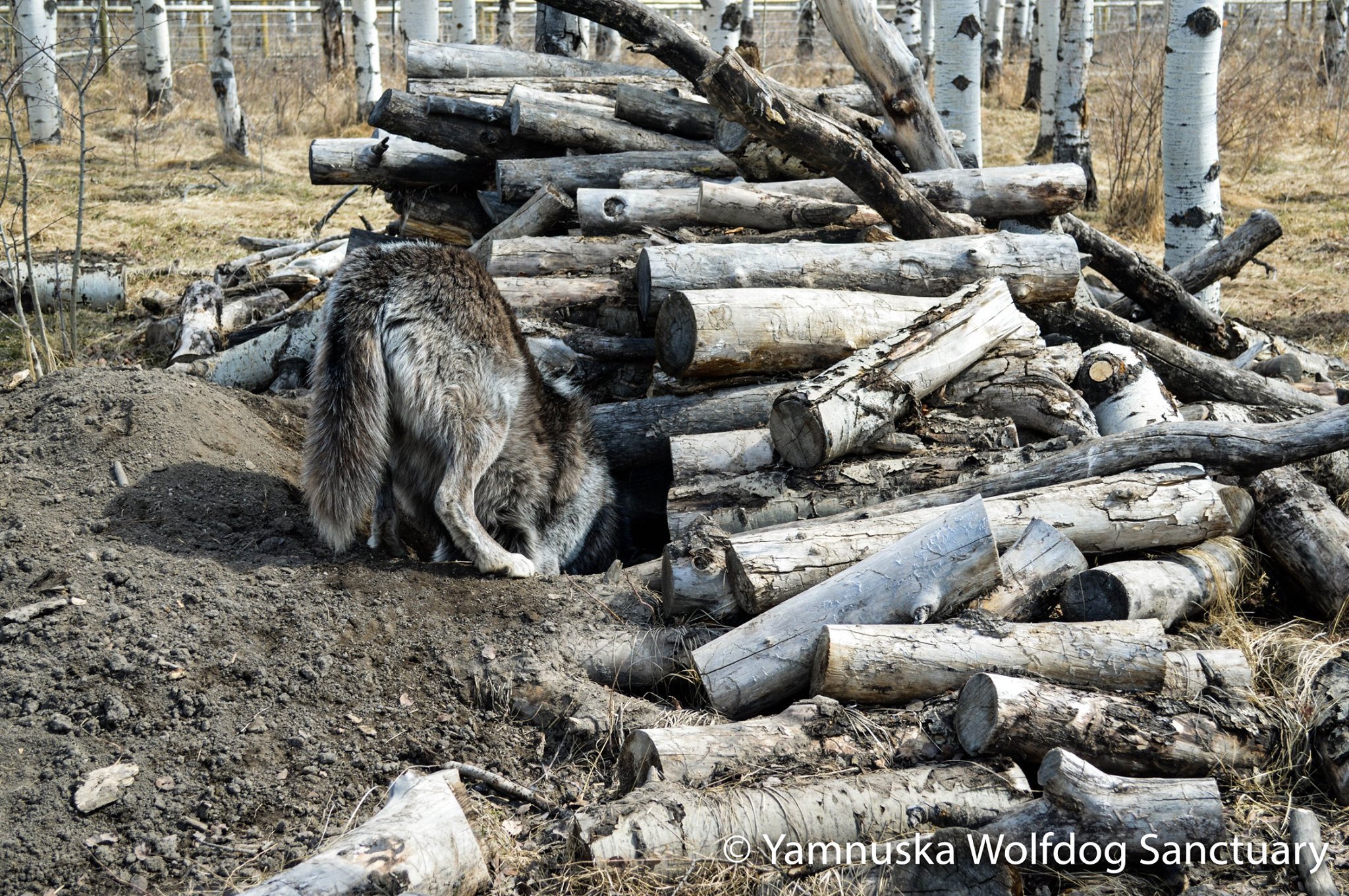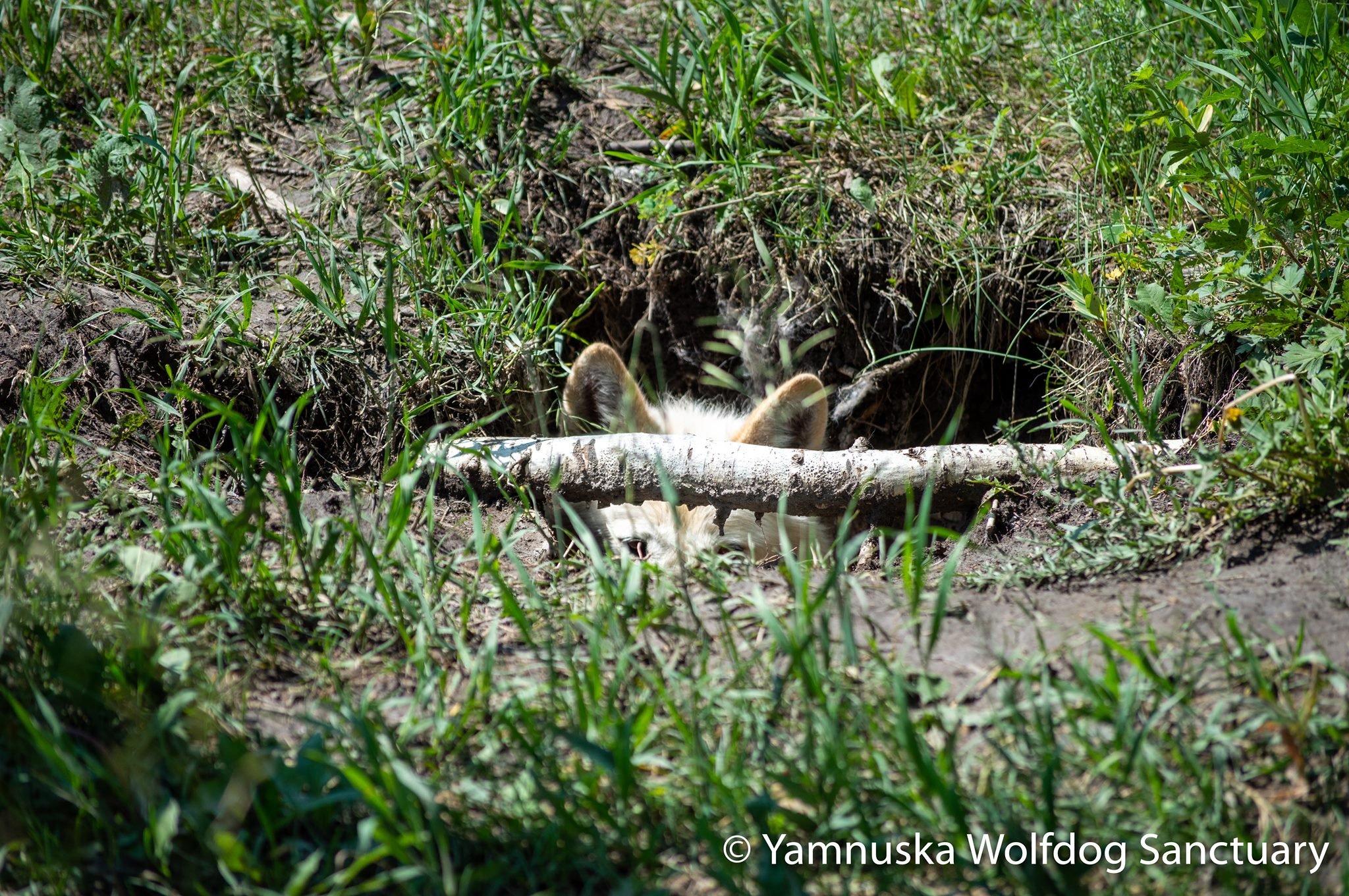Containment
If there is one thing I preach over and over again it is proper containment. Without proper containment you WILL fail at wolfdog ownership. Having proper containment will also make your life as a wolfdog owner 10x easier. Think of secure containment for a wolfdog as a play pen or crib for your baby. You essentially know that when they are in there, they are safe and for a moment you can concentrate on something else!
So what is proper containment?
Proper containment for a wolfdog is an enclosure that is spacious, secure and one that will provide your wolfdog with plenty of mental and physical stimulation. Most people can build a kennel for an animal that is escape proof, but just being escape proof isn’t good enough. You MUST create a safe space for your wolfdog that they are happy to reside in while you are not supervising them.
To me, containments should be as big as possible. Generally speaking, wolfdogs do not do well being contained in small spaces. They are also very active animals, both mentally and physically and you want to give them space to explore and express themselves. Here at the Sanctuary, our enclosures are anywhere from 1 to 3 acres in size. I know this isn’t feasible for everyone and that size isn’t necessary for every wolfdog, but bigger is better. Here at the Sanctuary, luckily we have the space to build such large enclosures. The animals also reside in their enclosures permanently, so we want to make sure they have plenty of space to move around and express their natural behaviours. If you own a wolfdog as a pet that you are bringing into your home, taking on walks every day, and providing lots of other ways of stimulating them, having something that large isn’t a requirement. I personally would still recommend a place that is a minimum of 5000 sq.ft.
As far as the construction requirements, most wolfdogs can scale a 6 foot fence. Don’t believe me? See my photo of Kuna as a youngster scaling the fence in the image below. Here at the Sanctuary, we build all our enclosures 8 feet high, with 2 foot overhangs, 4ft dig guards buried into the ground, and in some enclosures have hot wire near the tops as well. All the gates are double gated entries as well, to prevent any accidents of wolfdogs slipping through. See below for photos of our setup. Now, if you live in a more populated area, you likely have a bylaw in place that prohibits you from building a fence taller than 6 feet. This is where overhangs and potentially hotwire becomes your best friend to add additional security.
Kuna proved to me multiple times what a skilled climber she was. She taught me a lot about what wasn’t secure containment…
Why do you need proper containment?
Wolfdogs have a natural desire to roam. Just like many northern breeds they can be escape artists. The more wolf content that is in the wolfdog, the better at problem solving they become and the more athletic they are! This means that containment requirements dramatically increase with higher content wolfdogs. That being said, I have seen many low content wolfdogs that are complete masters at escaping.
Under no circumstance do you want your wolfdog to be roaming free. Number one, you do not want your wolfdog getting injured or killed. Number two, people generally don’t handle it very well when they see a wolfdog on the loose. They may wrongfully assume it is a wolf and that will cause quite a stir. And number three, you want to be a GOOD example of responsible ownership.
If you are not prepared to put in the effort and financial resources to keep your wolfdogs safely and happily contained at home, you have no business owning one. Period. You are not doing it a kindness by letting it roam free, and no, your wolfdog will not just stay home and protect your property. If you are under that impression, go back and read through all the Wolfdog Basics posted on this site.
Left to right: Temple, Pocaterra, Numa and Peyto enclosures at Yamnuska Wolfdog Sanctuary
Basics of Wolfdog Containment:
Below is a list of my recommendations. This is by no means an exhaustive list and there are other options. These are the ones I have personal experience with.
-
The fencing materials you choose for your containment is very important. Depending on the behaviour of your wofldog you will want to ensure the materials you choose can withstand any biting, chewing, and pulling.
Wire Options:
Chainlink: Although on the more expensive side, chain link is always a good option for wolfdog containment. You MUST use 9 gauge chain link, NOT 11 gauge. The 9 gauge is thicker and can withstand wolfdogs pulling on it.
Game Fencing: This is what we use at the Sanctuary. It is much more cost effective than chain link and the smaller squares near the bottom third are perfect to keep heads and paws from poking through.
Post Options:
Wood Posts: Wood posts can sometimes be more cost effective, but keep in mind their life cycle is shorter and they will require maintenance. Also, if you have a beaver for a wolfdog, expect the posts to become chew sticks! The first half of the enclosures we built at the Sanctuary were done using wood posts and they held up okay…
Metal Posts: Metal Posts are a great option for chewers and will basically last forever. We use recycled drill stem posts at the Sanctuary and they are fantastic. There is no maintenance required, they will never break, and if there was ever a fire, they would stay standing. Personally, I highly recommend this option.
Fence Panels: For smaller containments or temporary lockdowns, prefabricated panels are always a good option. They can be custom built to any size and are removable and transportable if necessary. They are expensive so you likely would never build something very large out of these. The ones we use are 9 gauge chain link panels. It can be a bit tricky to securely connect dig guards to these, so keep that in mind.
-
Overhangs are essentially a 45 degree lean in into the enclosure. This prevents the wolfdogs from being able to climb over the fence. It also serves as a very good visual deterrent.
Overhang options:
Wood: If you use wooden posts, you will likely use wooden overhang arms. In the past, we have used 2x4’s that were then bolted to the wooden posts, then we used fencing and wrapped that over the overhang arms.
Metal: If you use metal posts, you will want to use metal overhang arms. They are attached onto the posts and then fencing material can be stretched over the arms or you can stretch wires through.
-
Dig guards are extremely important as they will prevent your wolfdog from digging underneath your fence to escape. There are many options for dig guards, so here are a few.
Above Ground: This option involves laying a strong fence material down on the ground and then attaching this to your vertical fence using wire or hog rings. For smaller containments, you could lay down hog panels or even use patio stones. The first half of the enclosures built at the Sanctuary utilize above ground dig guards. They are a bit of a pain as the wolfdogs will run overtop of them which can lift the dig guards up. We constantly have to use landscaping pegs to keep them down in areas the vegetation hasn’t grown over them.
Under Ground: This option involves trenching the dig guards into the ground and then backfilling them. This is the option we prefer at the Sanctuary as it is a much cleaner look and there is no tripping hazards for the wolfdogs. It is also more secure as it is MUCH harder for a wolfdog to dig 4 feet down into the ground and then dig 4 feet back up on the other side!
Materials: There are many options for material you can use for dig guards. We use a sturdy fence mesh just in the event a naughty wolfdog decides they want to pull at it. You could also use chain link, hog panels, and pretty much any decently strong wire mesh.
-
Double gated entries are a must! This essentially serves as a safe guard for a wolfdog slipping past you through a gate. It makes bringing a lawnmower, wheelbarrow or any other supplies, much easier to get into the enclosures. In a pinch it also serves as a great area for separating one animal from the rest in case you need to give it some meds or anything like that. Our double gated entries have prevented a wolfdog escape countless times!
-
Enrichment in the enclosures is extremely important for the wolfdogs. This helps ensure they are able to receive the mental and physical stimulation in order to be happy in their enclosures. Below are some ideas of enrichment we have in our wolfdog enclosures as the Sanctuary.
Platforms: Wolfdogs love being up high off the ground.
Water Tanks: This gives the wolfdogs the opportunity to splash around in the summer and dive for any goodies you throw into their tanks
Trees: There is no substitute for a wolfdog being able to trot through a forest chasing after a scent on the breeze. They take a lot of comfort in having plenty of cover in the event they want to hide or remain unseen. This is such a natural part of life for wolves that I can’t imagine a wolfdog not having access to some kind of cluster of trees. If you have a wolfdog that regularly goes on walks with you through a forest, that can suffice. But for wolfdogs that spent the majority of their time in an enclosures, in my opinion, trees and shrubs are an absolute must.
Digging: Wolfdogs are big diggers so giving them ample opportunity to naturally dig is very important. Our wolfdogs are capable of digging the most incredible tunnel systems. It’s something we have to stay very on top of as otherwise there could be an opportunity for them to tunnel out of their enclosures.
Dens: This goes somewhat along with digging. Often times, wolfdogs will dig a den but depending on your ground material, often they collapse. Here at the Sanctuary we provide the wolfdogs with artificial dens that they can use to seek shelter from the elements if they so choose to, or it’s a spot they can hide food away from their pack members! As a side note, the wolfdogs probably spend more time on top of the den than actually in the den, but that’s okay! At least we have given them the option!
Piles of dirt or wood: This one is perhaps more of a natural occurrence, but wolfdogs love nothing more than a big pile of dirt! If we have need to clean up the deadfall in their enclosures and have made a pile out of it, you can bet they will dig a den under it! So this is a simple way to give them a bit more variety in their enclosures as well.
Rocks, logs, water features: Depending how crazy you want to get, you can add lots of fun different obstacles in their enclosure for them to navigate. This helps them use their brains and their bodies to explore.
-
Partitions are an optional but recommended addition to any large wolfdog enclosure. Since our enclosures are 1 to 3 acres in size, if we ever need a catch a tricky wolfdog or separate it for medical reasons for example, having a smaller partition area is very convenient. It’s also really handy to lock up the wolfdogs for a short period of time in the event we need to get some work done in their enclosure. You have the peace of mind that you can put the wolfdogs in the partition, open up the vehicle gate into their main enclosures and get whatever work done without risking the safety of the wolfdogs.
-
Electric fencing or hotwire is also an option if you need to add some additional security. In some of our earliest enclosures that were somewhat close enough to a power source, we chose to install electric fencing near the tops of the fences. This just acts as an additional deterrent for the wolfdog to not climb the fences. Personally, if you can build your enclosure tall enough and have a wolfdog that doesn’t regularly test your fence, hotwire probably isn’t worth it. It requires a lot of upkeep and it’s not something you want to have to rely on. Because if the power goes out, the wolfdogs know!
Enclosure Photo Gallery
Enrichment Inside the Wolfdog Enclosures
An example of enrichment inside the wolfdog enclosure. We use the water tanks for fun activities like this, or the wolfdogs can use them anytime to cool off on warm days.
Containment Recap:
Building a secure enclosure is 100% required!
Minimum 6ft tall with overhangs and dig gaurds
Double gated entries
Provide plenty of space for your wolfdog to be happy
Add enrichment items into the enclosures to provide plenty of stimulation















